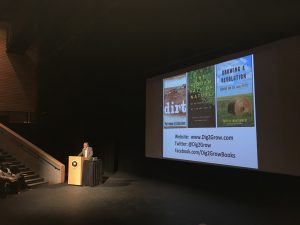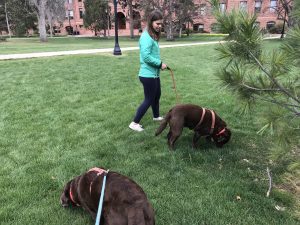Sorry this post is so late in the week—the past few days have been very busy. In class, we’ve learned about mineral-solution equilibria, greenhouse gases and the CO2 cycle, and the water cycle throughout Earth’s history.
Monday was spent learning about how to plot and interpret chemical-solution equilibria. This was wrapped up on Wednesday when we created an activity diagram of minerals that make up a typical granite.
Tuesday was spent focusing on two papers. The first paper by James C. Walker et al. titled, “A negative feedback mechanism for the long-term stabilization of earth’s surface temperatures”, focused on the relationship between atmospheric CO2 levels, surface temperature, and weathering rates. The second paper we read by Andy J. Ridgwell et al. (2003) hypothesized about the presence of different types of calcifiers and their connection to atmospheric CO2 levels. Tuesday night, many of us enjoyed a lecture by Professor David Montgomery that was part of the Roberts Memorial Lecture & Symposium in the Natural Sciences. During this talk, we learned all about soils—their degradation, what the impacts of their degradation will be, and how to fix this problem.

On Thursday, we shifted gears and learned about “The Big H2O Cycle”. This means that we learned all about the movement of water in different reservoirs. This brought us back to the question: is there water in the mantle? If so, how did it get there and can the amount change? How? Emily told us about the research that she is currently doing and plans to do in the future, focusing on how water has changed over time. We also got the pleasure of taking Bessie and Pearl out for a walk during lunch.
We are still waiting to analyze the results of the tests on the water samples that we collected from Manitou Springs and the rock samples from Manitou and Colorado Springs.
